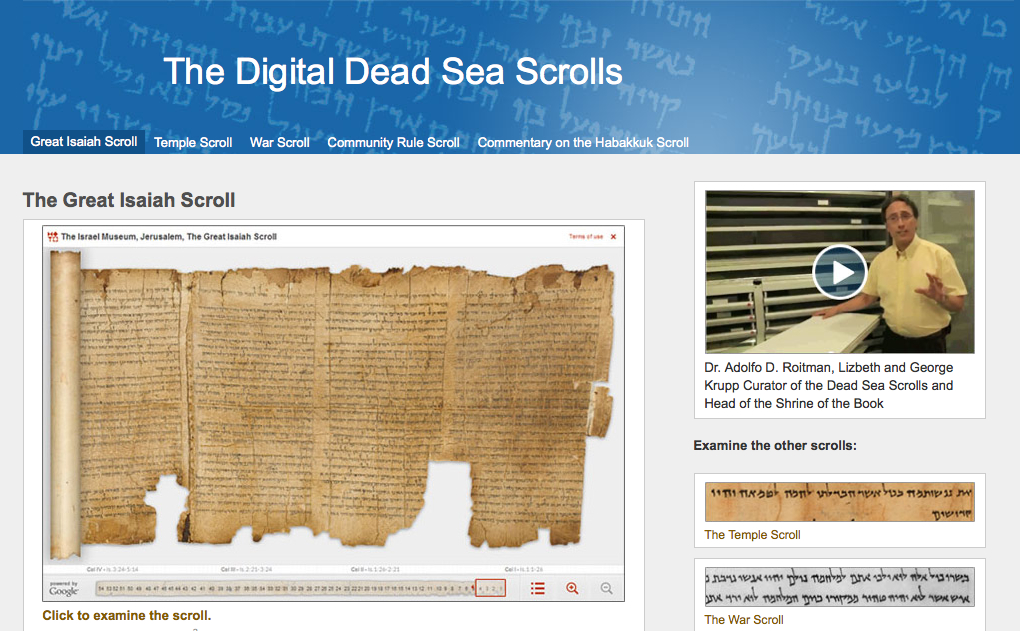To those who wrote the Dead Sea Scrolls, the idea of an infinitely reproducible copy that could be viewed and manipulated on touch screen tablets powered by electricity would probably have been less easily believed than the miracles described within the texts themselves. Yet, approximately 2,000 years after their creation, and a half century after their discovery, the oldest biblical texts known to man have been digitized and made available online via Google and the Israel Museum, Jerusalem.
The online exhibit features extremely high-quality (1,200 megapixels) images of the original scrolls, along with translations, background history, and searchable text. The project began in 2008, partially in order to preserve the deteriorating scrolls. Israel Museum director James Snyder is quoted in a Bloomberg article as stating, “This gives you a way to understand the beginning of biblical history…nothing could be more important.” The numbers agree—as of Sunday morning, the site had received 1,042,104 interested viewers, including 400,000 American visitors, the largest contingent from one nation.
These foundational texts were hidden in caves surrounding Jerusalem the night before the Romans destroyed the city in 70 A.D.. After their discovery between 1947 and 1956, they were available in the Shrine of the Book in Jerusalem. These are undeniably some of the most valuable primary sources in existence, yet while they were formerly unavailable outside of Jerusalem, they are now not only available to anyone with an internet connection, but comprehensible thanks to the in-depth background information and the museum’s sophisticated interface and English translation. This is the power of a Digital Library—not simply to provide, but to present. If the oldest known Biblical texts can go digital, surely the rest of our global cultural heritage can, too. It took a little less than 19,000 years for us to learn that these texts existed, and nine more years to excavate all of them. Take the additional .12 seconds it takes to query Google, and discover them for yourself.
